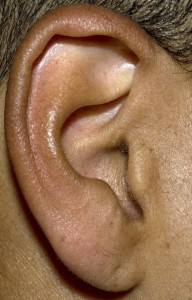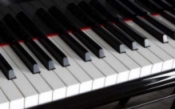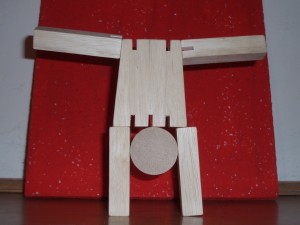Ear Training for Saxophone
Having a good ear is going to help a ton when you’re playing with other musicians.
Really, it’s a part of listening.

Being able to read music is also crucial since then all you need is a sheet and you can play many songs of many different styles.
At a jam session, you could have a real book, but it’s likely you will be playing songs that you already know.
One simple exercise you can do is listening to recordings of melodies and simply playing what you hear. You might need to play back a small piece many times, but don’t worry your ability to do this will improve very quickly.
A step beyond that would be to play back improvised solos as you hear them.
Protected: Saxophone Practice Challenge – Day 17
Saxophone Practice Challenge – Day 16
Saxophone Challenge
Saxophone Rhythm Part II
How do you count rhythms?
We learned a system in middle school that has worked well for me.
In 4/4 time, a whole note would be the word “one” held out for the whole measure.
Two half notes would be the words “one” and then “three” since that is where they each started and each would be held out for two beats.
Quarter notes are stated as “one”, “two”, “three”, “four”
Eighth notes are stated as “one”, “and”, “two”, “and”, “three”,”and”, “four”, “and”
Eighth note triplets as, “one” “tee” “ta” “two” “tee” “ta”, etc
Sixteenth notes as, “one” “E” “and” “a” (uh), etc.
Tip – Just counting the rhythms in time allows you to focus on only the rhythm without worrying about the sax.
Mindset Lesson–:
Isolating what you practice with rhythm will improve that piece and transfer over when you pick up your sax again.
Randy Hunter – How long will it take to get good on saxophone?
Another question that Randy Hunter has heard from many saxophone students is about how long it will take to get good at playing saxophone. Randy teaches sax at Emory University, he has written books and lessons specifically for beginning sax players. His lessons and books are available through Sax Station-Beginning Sax Lessons
Randy:
This question is relative to your expectations and practice commitment. First, you should realize that you will be a sax player for life. The most enjoyable part of playing sax is the journey. You can excel and improve for the rest of your life.
Protected: Saxophone Practice Challenge – Day 15
Saxophone Practice Challenge – Day 14
Saxophone Challenge
Saxophone Technique Part I – Overview
Saxophone technique allows the music that you want to play to come alive through your saxophone.
There are a few elements of technique and you need to know how certain ways of playing work as well as working them out so you can play them cleanly at different speeds.
Sometimes you’ll even figure out a ‘new’ technique that works better. It might be actually new, but is more likely new to you.
One example is how you finger different notes on your sax.
Bb can be fingered several different ways and the different fingerings work better depending on the note (especially which notes come before and after it).
Different ways of breathing, counting, and adding effects to your playing are all part of your technique.

- Learning Saxophone
Tip – Practicing technique will allow you to play what you want, but don’t concentrate only on fingering techniques and being able to play things fast. Your saxophone playing needs soul!
Mindset Lesson–:
Technique is essential for a saxophonist, but only practicing technically will give you facility and dexterity, but not necessarily something people want to hear.
Protected: Saxophone Practice Challenge – Day 13
Protected: Saxophone Practice Challenge – Day 12
Saxophone Practice Challenge – Day 11
Saxophone Challenge
Day 11 – Saxophone Minor Scales
Master your major scales on saxophone first!
Once you know your major scales, you’ll have some of the minor scales under your fingers already. The sound of the minor scale is all about the minor third. All the ‘minor’ scales use a minor third. Some use a minor sixth and/or minor seventh, but those notes don’t give the minor scale it’s ‘minor’ sound (although they do change the flavor a bit).
If you play a C major scale, but start on A then it becomes an A natural minor scale.
Minor scales are slightly more involved. There are three types- harmonic, natural, and melodic.
But you can relate the minor scales back to the major scales.
You’ll see minor chords in music all the time, so it’s useful to know the minor scales.
And it’s good to know the different kinds, since they each have a different feeling.
After you have mastered the minor scales, you might want to get into the different modes. What that means is that you take a major scale and get a different ‘mode’ by starting on each different note.

Tip – By knowing the major scales, you know a lot of how the minor scales work. And by hearing the sound of it, your ear will help you.
Mindset Lesson–:
Practice scales part of the time, but don’t get caught up in them! Remember that you’re playing music.
Joe Henderson – Tenor Sax – Double Rainbow – Brazillian Jazz
Joe Henderson on tenor saxophone. On Double Rainbow, he plays Brazillian jazz from Jobim. The CD is interesting partly because he plays both with an American rhythm section including Herbie Hancock and a Brazillian rhythm section with players like Eliane Elias.
And it grooves! So check it out



